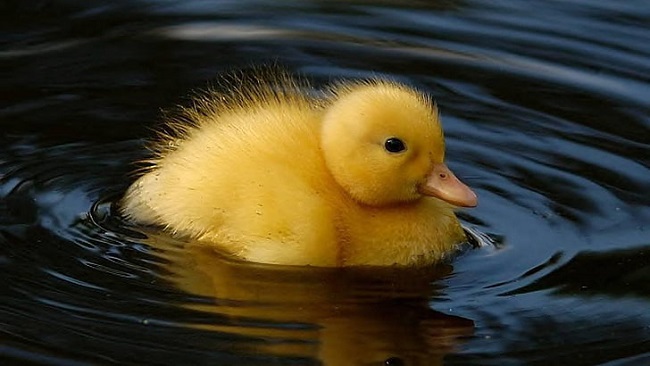Whether depicted in popular media or seen in real life, the image of a fluffy, yellow duckling is imprinted in our collective consciousness. But have you ever paused to consider why many ducklings are yellow?
This comprehensive guide dives into the science and reasoning behind the charming color of these adorable creatures.

The Science of Yellow Ducklings
Let’s embark on a journey that uncovers the truth behind the captivating yellow plumage of many ducklings.
Read Also:
Pigmentation and Genes
The color of a duckling’s down – the soft, fluffy feathers covering their bodies after hatching – is determined by pigmentation produced by specific genes. These genes guide the production of melanin, the primary pigment in birds.
Two forms of melanin are present in birds, eumelanin (responsible for black and brown hues) and pheomelanin (responsible for yellow and red hues).
In many duck species, the pheomelanin pigment dominates initially, resulting in yellow ducklings.
The Role of Evolution
Evolution plays a significant role in the coloration of animals, including ducklings. Over generations, traits that benefit the survival of a species tend to persist, while those that don’t diminish. Yellow coloring offers several advantages to ducklings:
Camouflage
While it may not seem like it, the yellow coloring of many ducklings provides excellent camouflage. Ducklings are often hidden in grass or reed nests, where their yellow down blends in with the surrounding environment, providing protection from predators.
Parental Recognition
Another theory suggests that the bright yellow color of ducklings helps parent ducks recognize their offspring among other species, aiding in their care and protection.
From Yellow to Adult Plumage
As ducklings mature, they undergo several molts (shedding and regrowth of feathers). During these stages, their yellow down is replaced by the mature feathers of adult ducks, which are often a different color.
This process, influenced by hormones and genes, varies between species and individual ducks.
Not All Ducklings Are Yellow
It’s important to note that while many ducklings are yellow, not all of them are. The color of a duckling can vary based on the species, genetic factors, and even diet.
For example, Mallard ducklings are covered in a mix of yellow and brown down, providing them with effective camouflage.
Variations in Duckling Coloration
In the diverse world of duck species, the color of ducklings can vary significantly. Let’s explore a few examples:
Muscovy Ducklings
Muscovy ducklings are a distinctive breed with a unique color pattern. Unlike the stereotypical yellow duckling, Muscovy offspring usually have black and yellow mixed down, offering excellent camouflage in their typical habitats.
Pekin Ducklings
Pekin ducks, renowned for their white adult feathers, usually hatch yellow ducklings. As they grow, Pekin ducklings lose their yellow down and develop white feathers, a dramatic shift influenced by genetics and maturation.
Cayuga Ducklings
Cayuga ducklings offer another deviation from the yellow norm. These ducklings often hatch with black down that eventually grows into an iridescent green-black plumage in adulthood.
Yellow Ducklings in Popular Culture
The image of a yellow duckling has become iconic in popular culture. From the children’s classic “The Ugly Duckling” to the rubber duck toy, yellow ducklings hold a special place in many hearts. This is often attributed to the vibrant, uplifting color and the undeniable cuteness of these tiny creatures.
The Importance of Proper Care
Whether they’re yellow, brown, black, or a mix, all ducklings require proper care and a suitable habitat to thrive. They need a balanced diet, plenty of water, warmth, and a safe space free from predators.
If you find a wild duckling, it’s generally best to observe from a distance and contact a local wildlife rehabilitator if the duckling appears to be in distress.
Read Also:
Conclusion
The vibrant yellow of many ducklings is a fascinating blend of genetics and evolution, serving both as a survival mechanism and a means of parental recognition. As these ducklings grow, their plumage will change, reflecting the diverse and captivating world of avian coloration.
























